Whether new to hot tubs or a veteran, daydreaming about relaxing in the roiling hot tub bubbles is now a reality. But how long will you need to wait for your hot tub to heat up? And are there ways to shorten the heating time?
It can take 4 to 20 hours to heat your hot tub to 100-102°F (37.8-38.9°C). But, how long yours will take depends on water temperature, heater power, and ambient temperature. On average, the hot tub water will rise by 3-6°F (1.5-3°C) degrees per hour.
As you can see, there isn’t one definite timeframe to heat your hot tub. So, let’s look at these influencing factors and tips on shortening heating time.
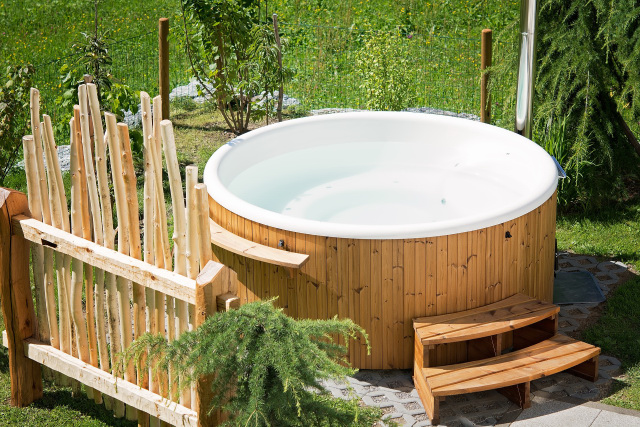
Article Contents
Factors that Affect Heating Time
Multiple factors will affect heating time. These include the hot tub’s base temperature, ambient temperature, hot tub size, insulation type, and the heater’s efficiency.
Base Temperature
Even though it seems the most obvious, the starting water temperature will affect how long it takes to heat your hot tub.
The starting temperature will be much higher if you keep your hot tub running. However, keeping your hot tub running will significantly increase costs. And, it may not suit every hot tub owner.
Some owners may not use their hot tubs often enough to offset running costs. Or there are situations such as opening after winterizing and first use.
Ambient Temperature
Ambient temperature is essentially the outside temperature. Therefore, how warm the surrounding temperature is will quicken how long it takes to heat your hot tub.
Naturally, it’ll be easier to heat during spring and summer and more challenging in colder months. But you can still influence the ambient temperature around your hot tub despite the season.
If your spa sits on a windy path outside, you can lessen its cooling effect with fencings such as shrubbery or a heavy-duty privacy screen. Or even consider installing a gazebo, if space allows.
If you’re a first-time hot tub owner or an experienced owner willing to reposition your tub, look at moving it into a sunny spot. And this isn’t just a tip for outside tubs. Having your hot tub in a sunny place inside will help keep the base temperature higher than usual, especially if you’re in a mild/sunny climate.
If your hot tub is sitting outside, you might notice your sanitizing levels keep dropping. This might be due to UV rays burning off your chlorine. Curious how to offset this?
Check out our guide: Do Hot Tubs Need Stabilizer? | How to Use Stabilizer
Hot Tub Insulation
How well your hot tub heats and retains heat depends on the insulation quality. Heat rises, so it makes sense that the hot tub surface is where heat will escape. But it can also escape through thin or poorly insulated walls, floor, cracks, and holes in the hot tub cabinet.
Another insulation factor to consider is the material under the tub. This will influence how long it takes to heat your spa’s water. For example, a cold base such as concrete will keep the hot tub floor cold. Therefore, the water will be cooler from the start.
Hot Tub Size
The bigger the hot tub, the longer it’ll take to heat up fully. So one of the considerations here is ensuring your hot tub suits your needs.
Understandably, a 700 gal (3,180 l) hot tub will take longer to heat than a 500 gal (2,270 l). However, it does depend on your heater’s size and efficiency.
Heater Efficiency
Every hot tub comes with a heater. But that doesn’t mean it’s the highest power heater available for the hot tub. Plus, even if it works perfectly for you initially, it can lose efficiency over time. So you may consider upgrading to something that will heat the spa much quicker.
Heating for hot tubs and Jacuzzis is measurable in kilowatts per hour (kw/h). And, generally, the higher the kw/h, the quicker your hot tub will heat up. However, the higher the power of your heater, the more electricity or gas it will use.
How Long Does it Take to Heat a Hot Tub?
Depending on the starting conditions, heating your hot tub can take 4 and 20 hours. Aside from the factors above, it can also depend if you’re filling the hot tub from the tap or already have water in your tub. In any case, the ambient water temperature will influence heating speed.
For example, heating a 300 gal (1,360 l) hot tub with a 1.5kW heater using summer mains water may take 20 hours to heat. However, if you’re heating the same hot tub with winter mains water, you should expect it to take a few hours longer. It will depend on the temperature of the water coming out of the tap.
Hot tubs are designed to be warm 24/7. So, once you’ve reached the optimal temperature, it should take only 20 minutes to raise the temperature back using the same heater after 30 minutes of hot tub use.
Different Ways to Heat Your Hot Tub
Not only do you need to weigh up hot tub size and location, but the way you heat your hot tub is also an important aspect to think of. Some may be quicker but more expensive. And others may suit a bigger hot tub to smaller ones. So, which one suits you best?
Electric
Possibly the easiest to run, using electricity to heat your tub won’t suit impromptu relaxation. In addition, heating your hot tub this way is slow and will eat into your electricity usage, hiking up bills.
To heat your hot tub electrically, you must have a power circuit capable of supplying enough current. That will depend on the hot tub heater size. Some hot tubs will require their own circuit whereas others may be OK using a standard outlet. If you’re not sure, get an electrician to check it for you.
Arguably the most efficient way to electrically heat your hot tub is a heat pump. These won’t heat your spa faster than gas, but they won’t empty your wallet in electricity costs either. They are still fast and efficient.
Heat pumps work like an air conditioner in reverse. They work by sucking in surrounding warm air and using that to heat the hot tub water. And they can work great if you need to lower the hot tub temperature too.
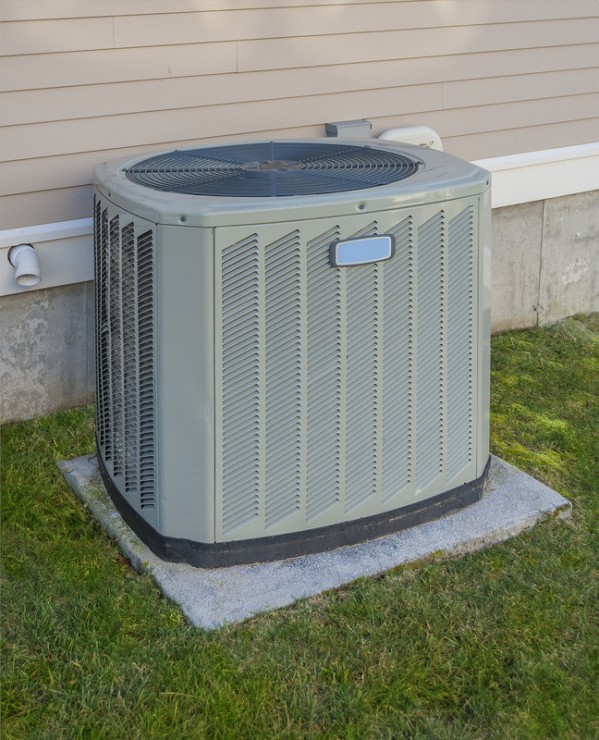
Gas
Gas, including propane and natural gas, is the quickest way to heat your hot tub. To use natural gas, you’ll need to hook it into the mains gas line. Or you’ll need to install a separate propane tank for propane.
The downsides of gas are the fumes it releases and the cost. When using gas or propane, you must ensure that the heater is in a well-ventilated area. In addition, propane gas is expensive, and propane heaters have a limited lifespan, so they may not suit everyone’s budget.
However, natural gas might be the best option if you want the speed gas heaters can provide. In addition, natural gas heaters tend to run cheaper and don’t emit fumes like propane, making it a more budget- and environmentally-friendly option.
Solar
With the increasing use of solar heating, the thought of using solar is only natural. Whether heating this way is for you will significantly depend on how much sun you get. Keep in mind, that solar only works when there’s sun. So you won’t be able to heat at night or in winter.
They do have an expensive upfront cost for installation. And solar heating systems do require the use of electricity. But, with such low running costs, it will be cheaper than just electrically heating.
Wood Fire
Using wood to heat your hot tub is another environmentally friendly and cost-efficient option. Plus, it can be six times faster at heating than electrical. However, with wood, there is more prep and after-use maintenance needed. For example, you may need to harvest the wood first and ensure it’s dry, as wet timber will slow down the heating speed. And then clean out ash from the heater after each use.
Other disadvantages to using wood are temperature control and smell. Using wood to heat doesn’t have an automatic shut-off point, so you may have to add cold water to regulate the temperature using a floating hot tub thermometer. Also, the smell of wood-burning is subjective. Some love the smell and feel it adds to the relaxation. But neighbors may disagree.
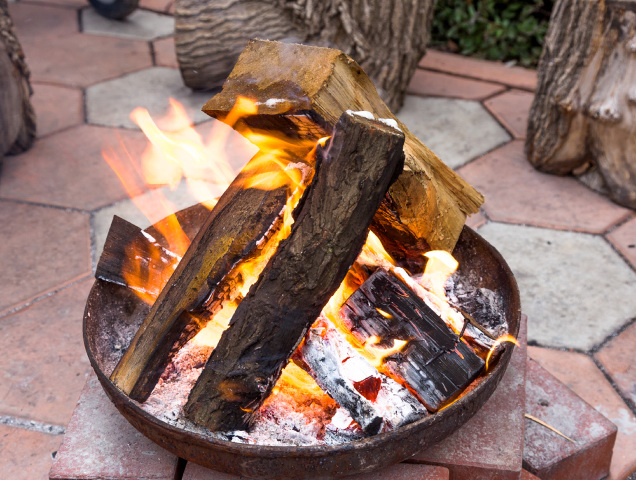
What Temperature Should a Hot Tub Be?
Your hot tub temperature will depend on your preference, weather conditions, and potential health risks. Most users enjoy temperatures between 96-100°F (36-38°C). However, there are minimum and maximum temperatures to be mindful of for your safety.
What Happens If It’s Too High?
The industry’s maximum temperature for hot tubs is 104°F (40°C). Temperatures above this can have drastic effects on the body. People can experience hot tub hyperthermia and exhibit symptoms such as heat stroke, drowsiness, or even passing out.
Aside from personal health, if your hot tub exceeds the maximum temperature while not in use, it will be vulnerable to heat damage such as melting or cracking.
What Happens If It’s Too Cold?
Most experts recommend keeping your hot tub above 78.8°F (26°C). This is primarily for health reasons to prevent numbness or even hypothermia.
If you’re planning to shut down your hot tub while on an extended vacation or for winter, it’s essential to winterize it. Winterizing your hot tub involves draining the hot tub and clearing out the pipes. During colder months, water left in the lines can freeze and fracture the pipes and inner heater elements.
Related Reading: How to Close Above Ground Pool | Easy Way to Winterize
Reasons Why Your Hot Tub is Slow To Heat
There are many reasons your hot tub is slow to heat; the most common ones are below.
- Heater is malfunctioning
- Using an inefficient hot tub cover
- Not calibrating the thermostat
- The ambient temperature is extremely low
- Using the air blower
- The heater isn’t running long enough
- Miscalibrated sensors or switches
- Filter is dirty
- The water level is too low
- A recently drained and refilled hot tub
These reasons are why regular maintenance and checks are essential in maintaining your hot tub and keeping the heater working as efficiently as possible.
Keep your hot tub running smoothly (and prevent the filter from clogging), include shocking into your weekly cleaning routine. If you’re not sure how to shock a hot tub, check out our guide here: How to Shock a Hot Tub
How To Heat Your Hot Tub Quickly
Not everyone wants to wait 4+ hours for their hot tub to heat. Luckily, a few steps help heat your hot tub quickly.
1. Cover The Hot Tub
A well-insulated high-quality hot tub cover will prevent the building heat from escaping from the water surface. And it will prevent cooler ambient temperature from slowing down the heating process.
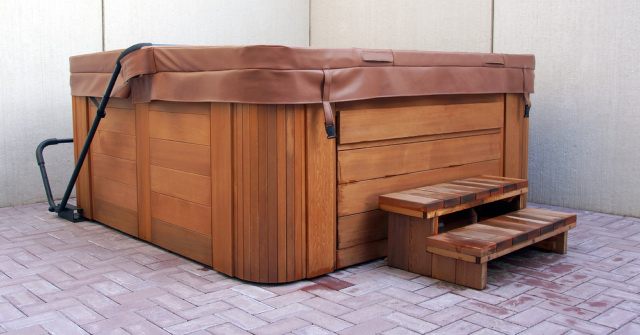
2. Insulate The Sides and Under the Hot Tub
Adding additional insulation between the bottom of your hot tub and the surface your hot tub is sitting on can make a large difference to the heating time. It will also significantly improve heat retention. Insulating the sides may help as well, especially if you have a lower-quality hot tub with poor internal insulation.
3. Invest In a Powerful Heater
A long-term solution is to invest in a higher kilowatt heater to heat your hot tub quickly. But, before you do, ensure your hot tub can handle the higher wattage. Alternatively, you could switch to gas. Gas is the fastest way to heat a hot tub.
4. Turn On Jets and All Water Features
Turn on all the jets in the hot tub, including massaging jets and any water feature. Doing this will improve water circulation and spread the heat around more evenly.
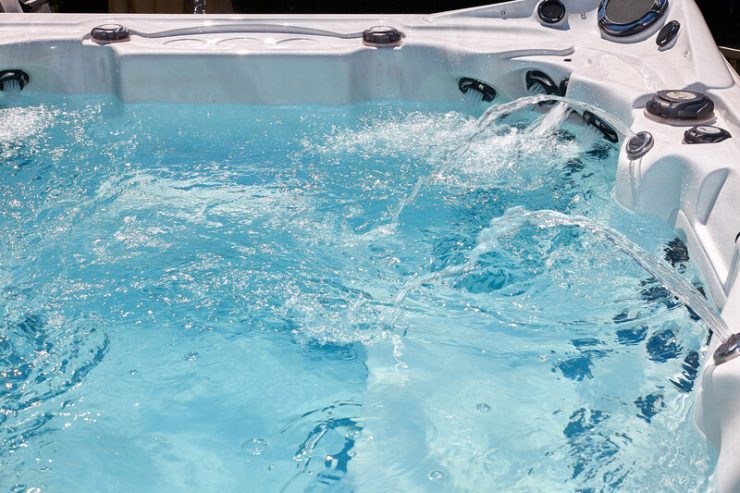
Can You Use Hot Water To Fill a Hot Tub?
Experts don’t recommend using hot water to fill up your hot tub because of the heat of the boiling water.
Although it might have crossed your mind to shorten waiting time, adding boiling hot water isn’t the best option. Freshly boiled water sits at 212°F (100°C), and most hot tubs can’t tolerate temperatures above 104°F (40°C). Above this maximum temperature, your hot tub will start melting or giving away.
You could use hot water from your tap though if there is already colder water in the tub.
Tips on How To Lower Hot Tub Heating Costs
Whether you’re an expert with hot tubs or curious about buying one, running costs can be a cause of concern. Here are some tips on lowering running costs so you can still have your relaxing luxury.
- Pick a well-insulated hot tub.
- Protect the hot tub from cold in a gazebo/building.
- Use a high-quality hot tub cover.
- Protect the hot tub from the wind with fencing/screening.
- Turn off water accessories (massaging jets, lights).
- Put your hot tub into ‘holiday’ mode while away or when not in use.
- Change filters regularly.
- Use a floating thermal blanket.
- Insulate the bottom and sides of the tub.
Final Thoughts
Relaxing in a hot tub after a stressful day is the dream of many. However, the reality of waiting for it to heat up can be a pain.
Luckily, depending on the starting conditions, you could only need to wait 4 hours before you can unwind in your hot tub.
And, with improved technology, some hot tubs can be remotely heated, so it’s ready to go when you are.
Related Reading:
Can You Fill a Hot Tub or Spa with Well Water?
How to Raise Alkalinity in Hot Tub (Alkalinity is Low)
Soda Ash vs. Baking Soda for Hot Tub: Which is Better?
Chlorine Vs Bromine for Hot Tubs (Which is Better?)
Should You Insulate a Hot Tub Pad? (How and What to Use)
Why Your Hot Tub Pump is Noisy & How to Fix It (Quieten it)


